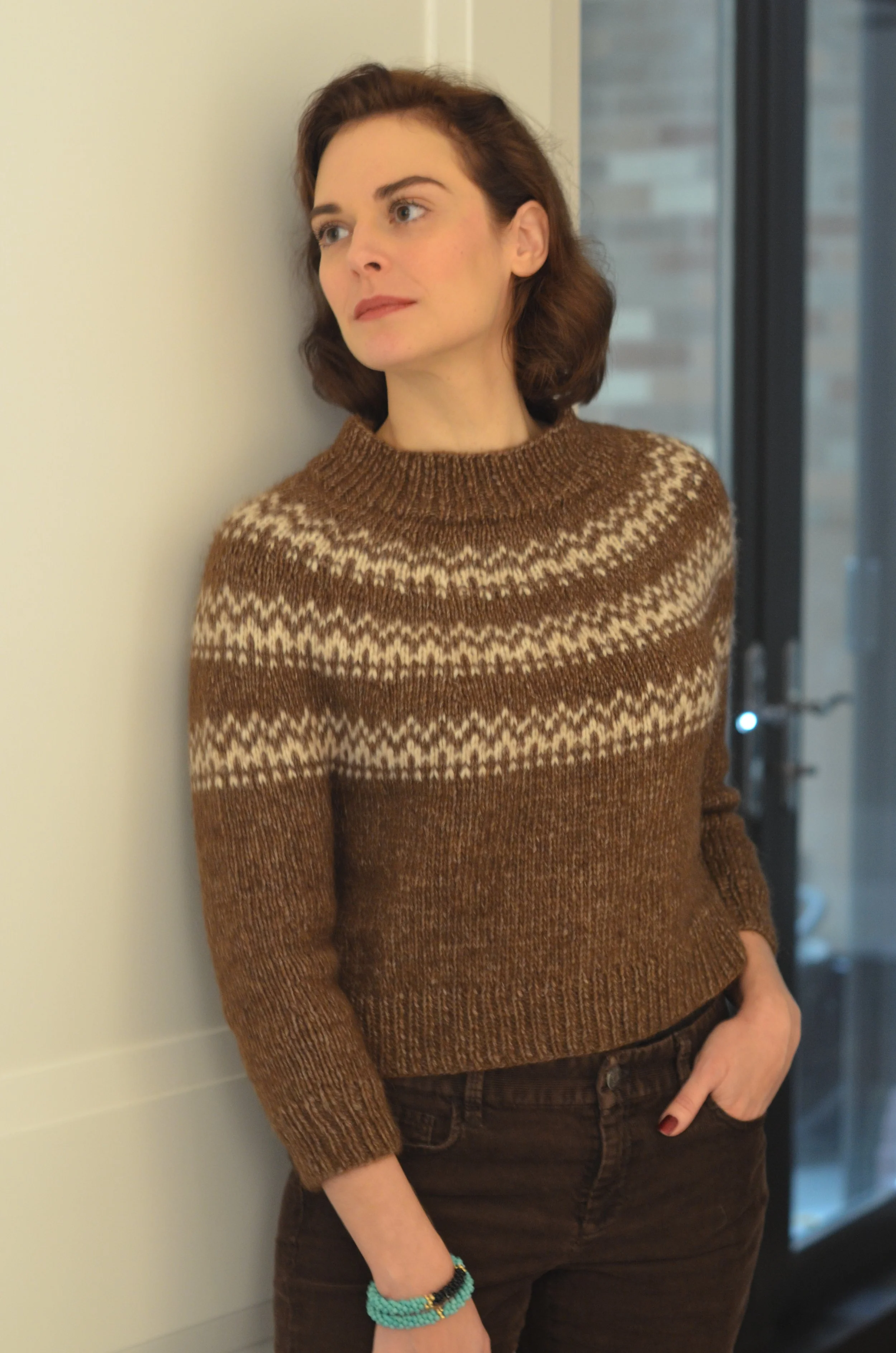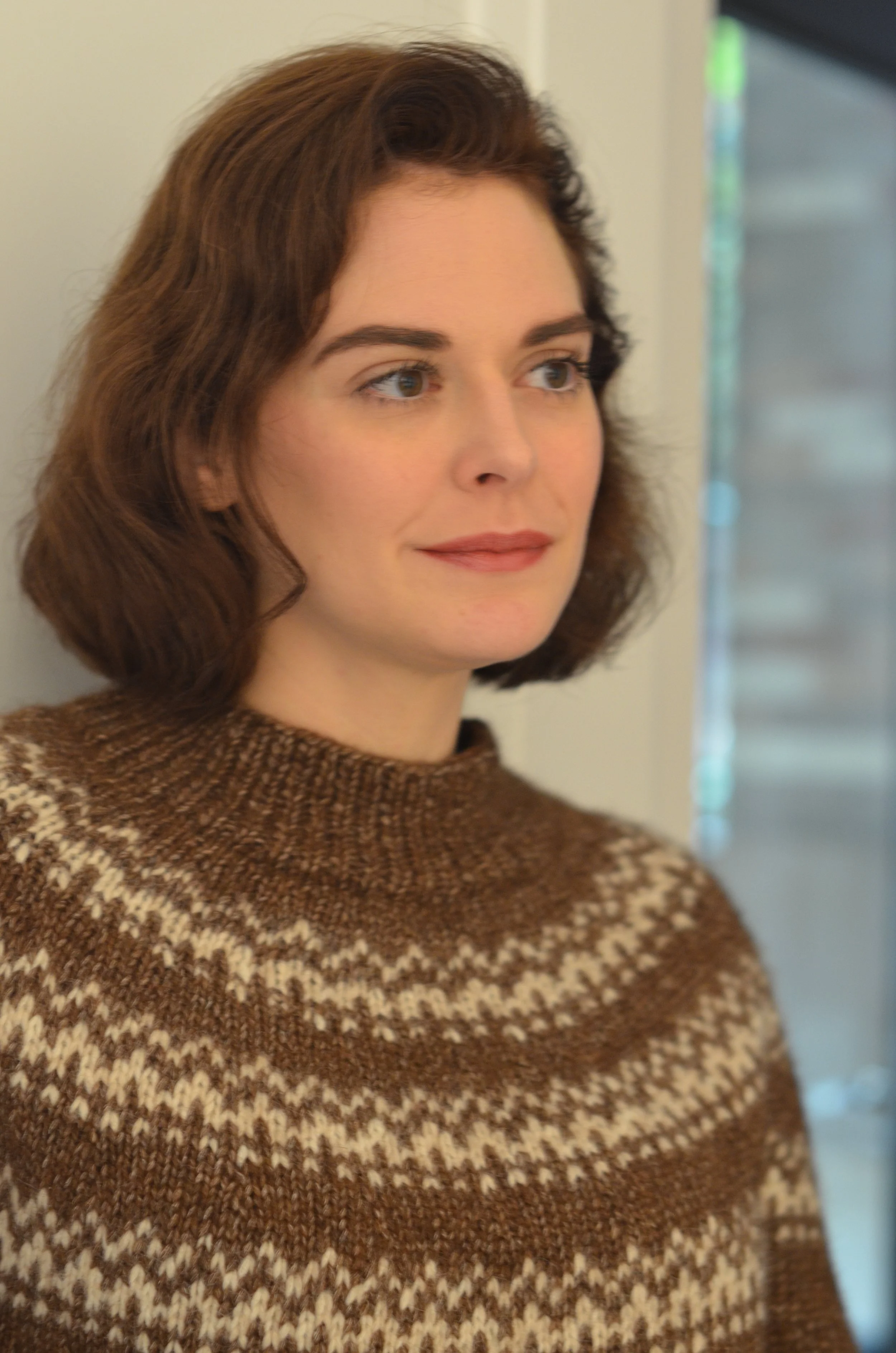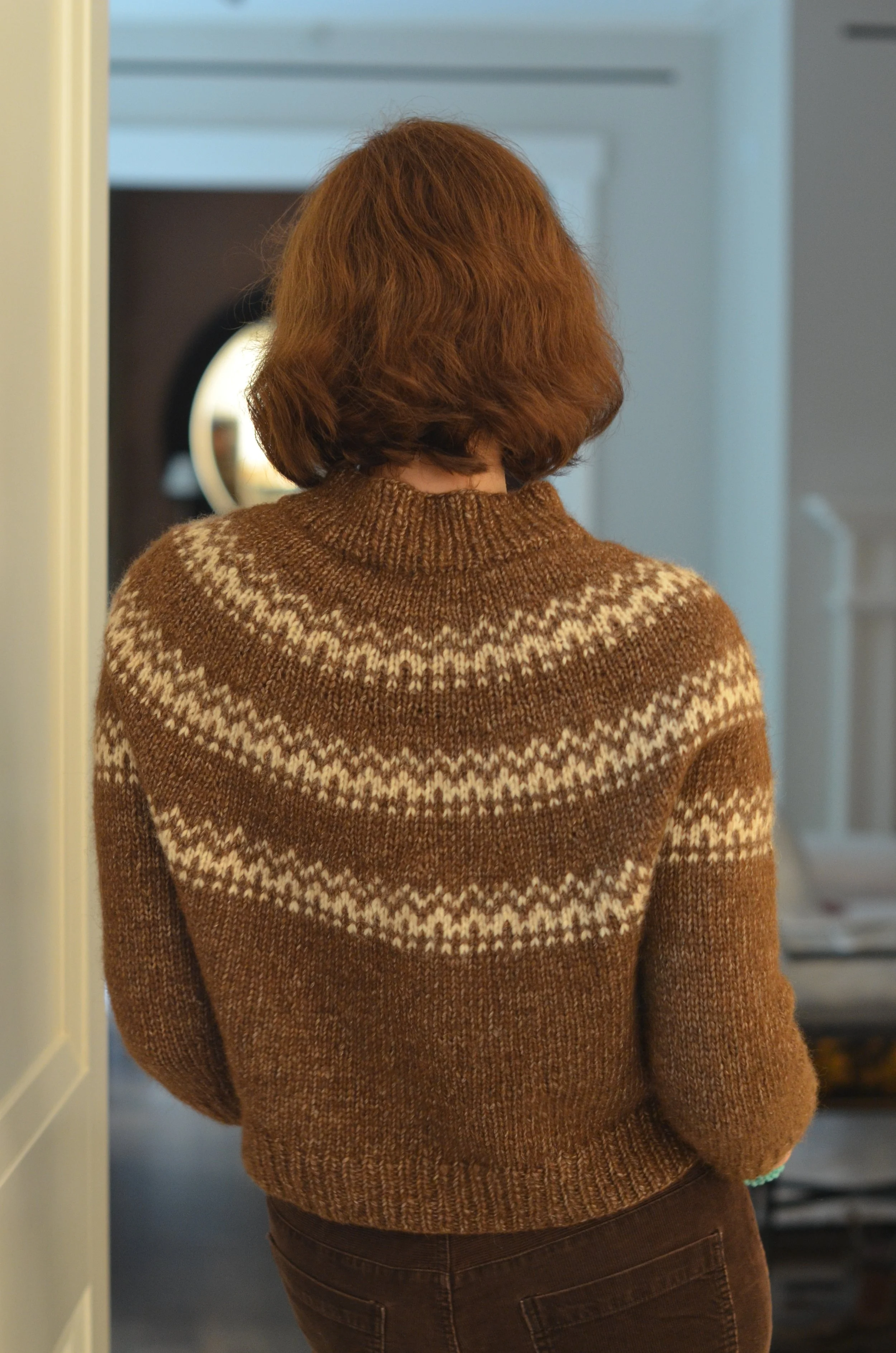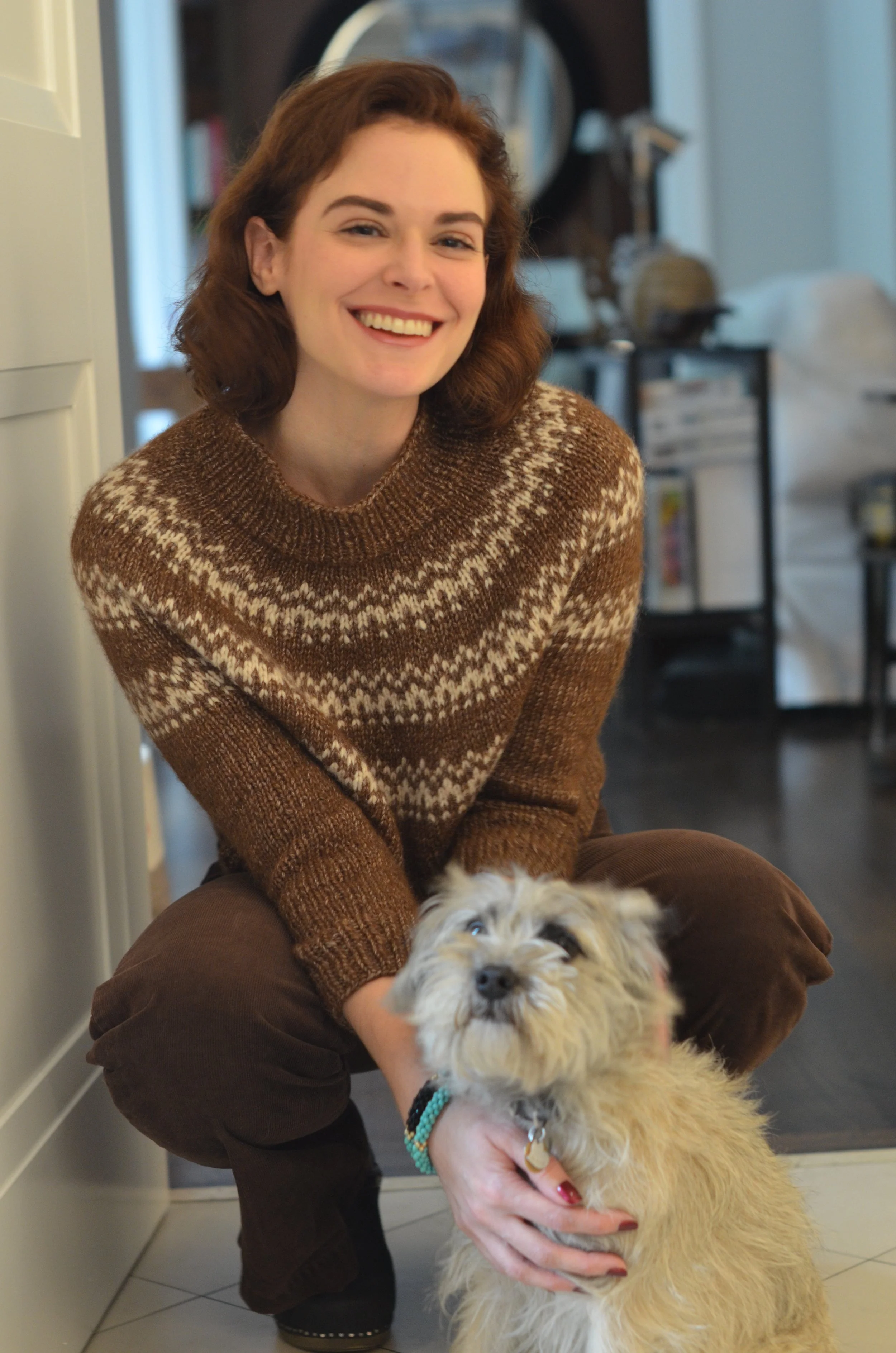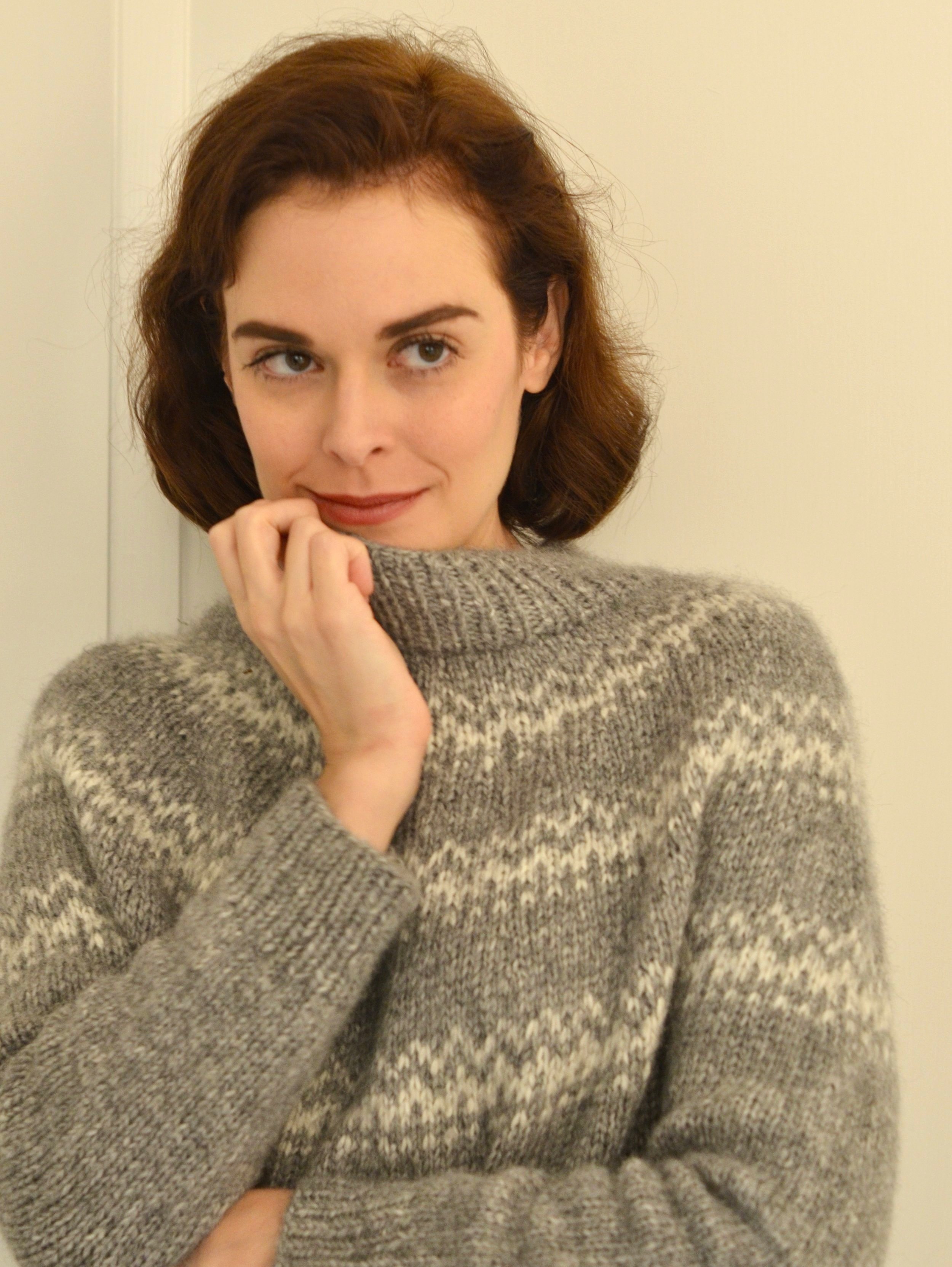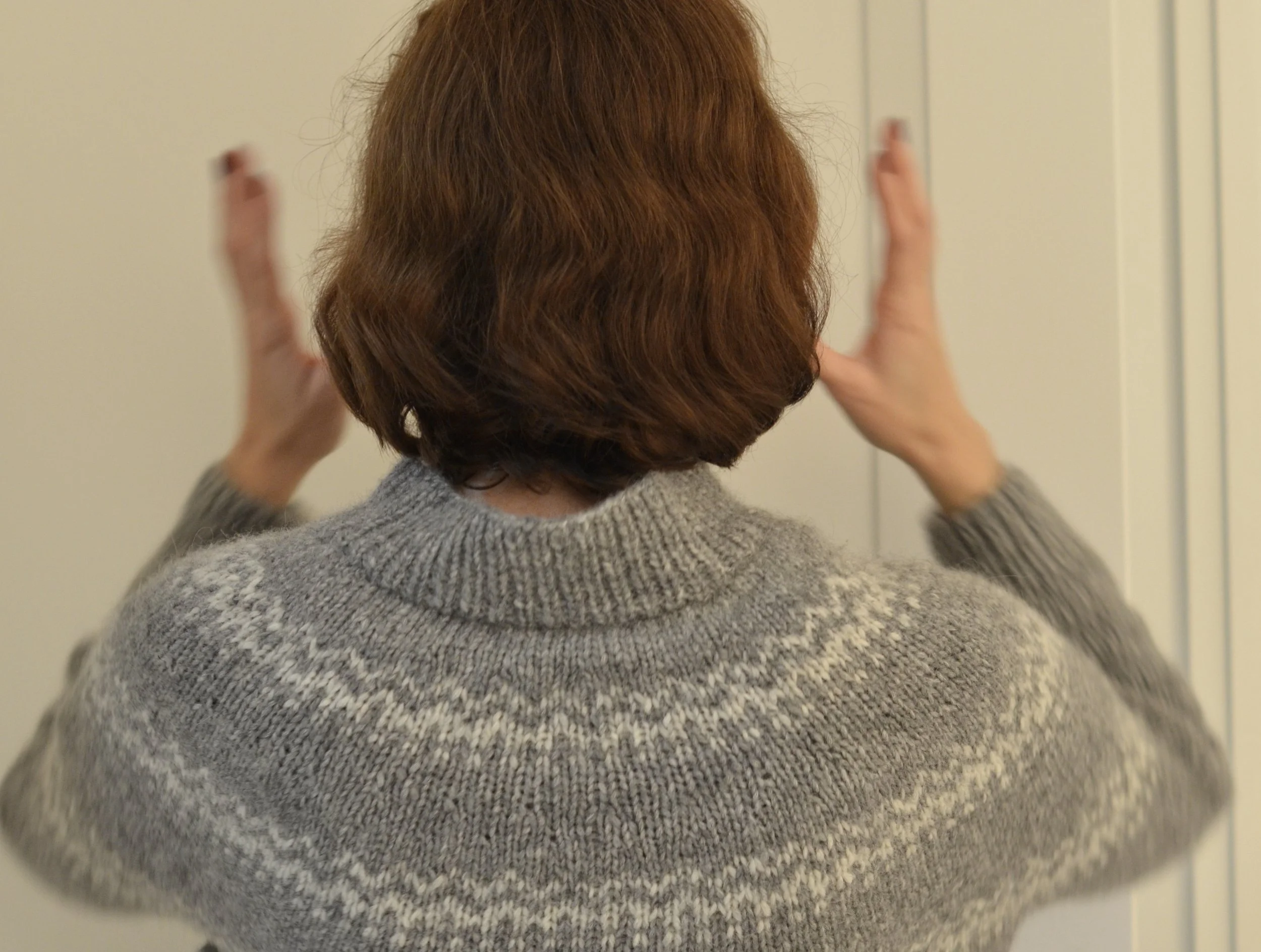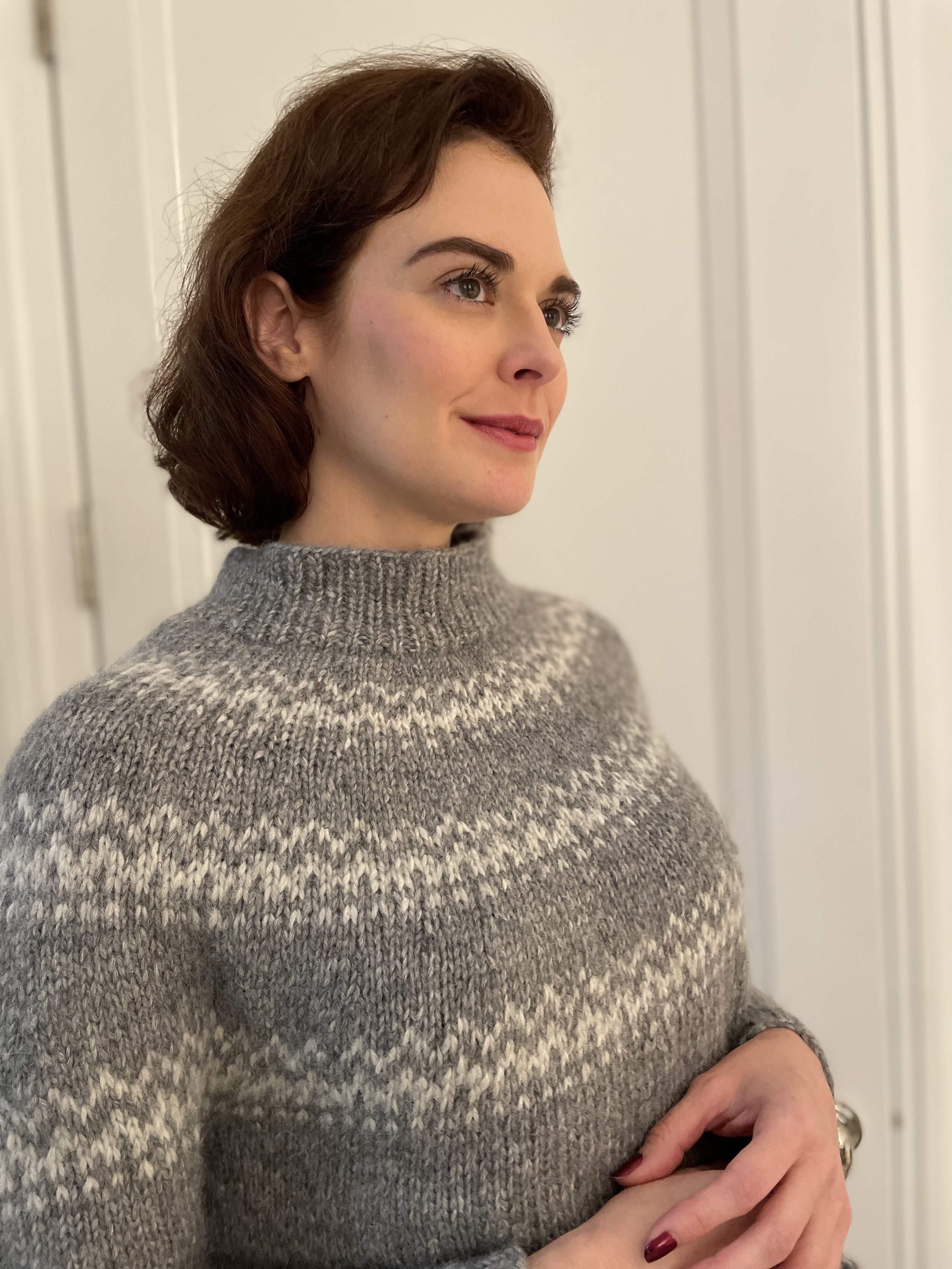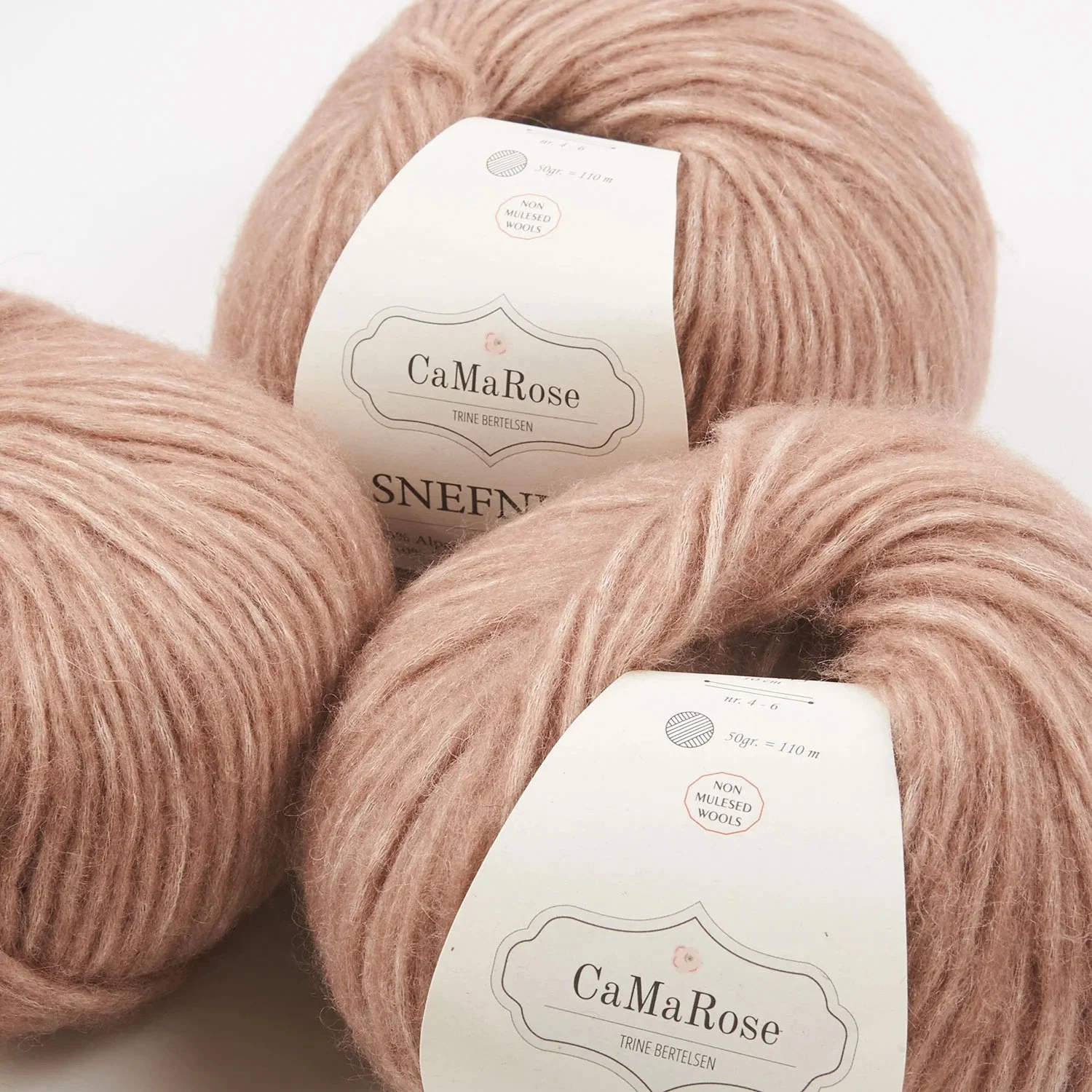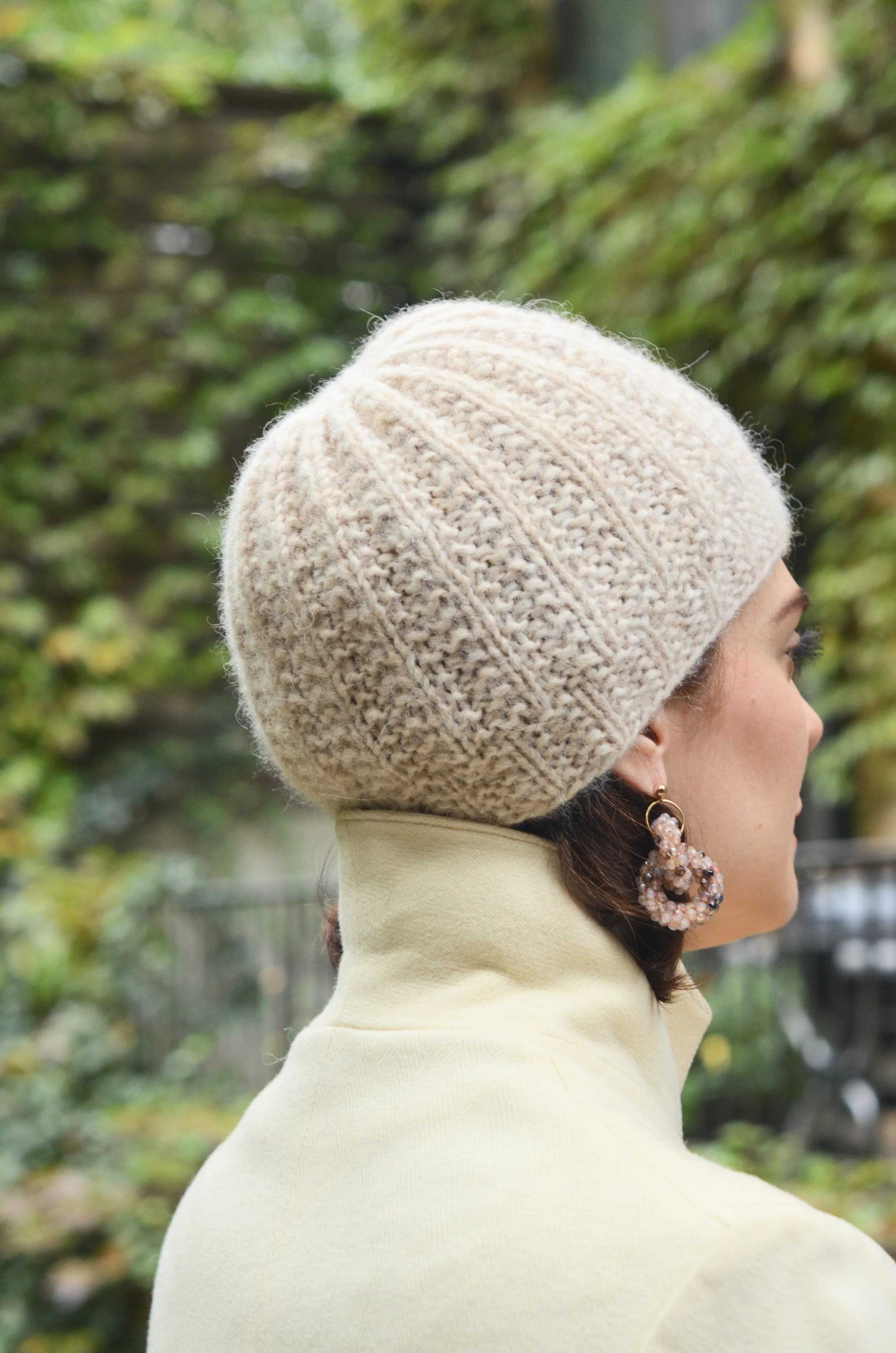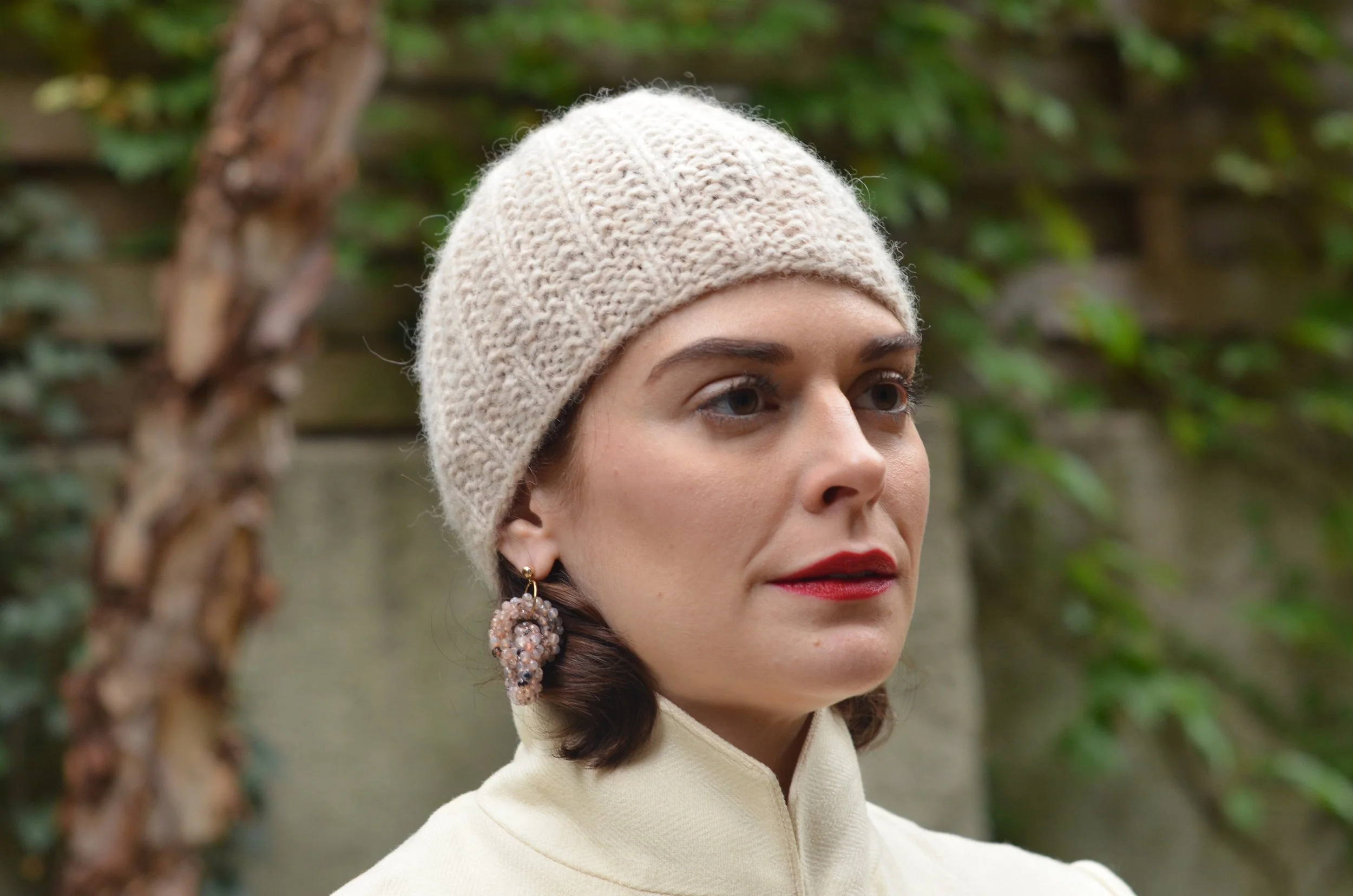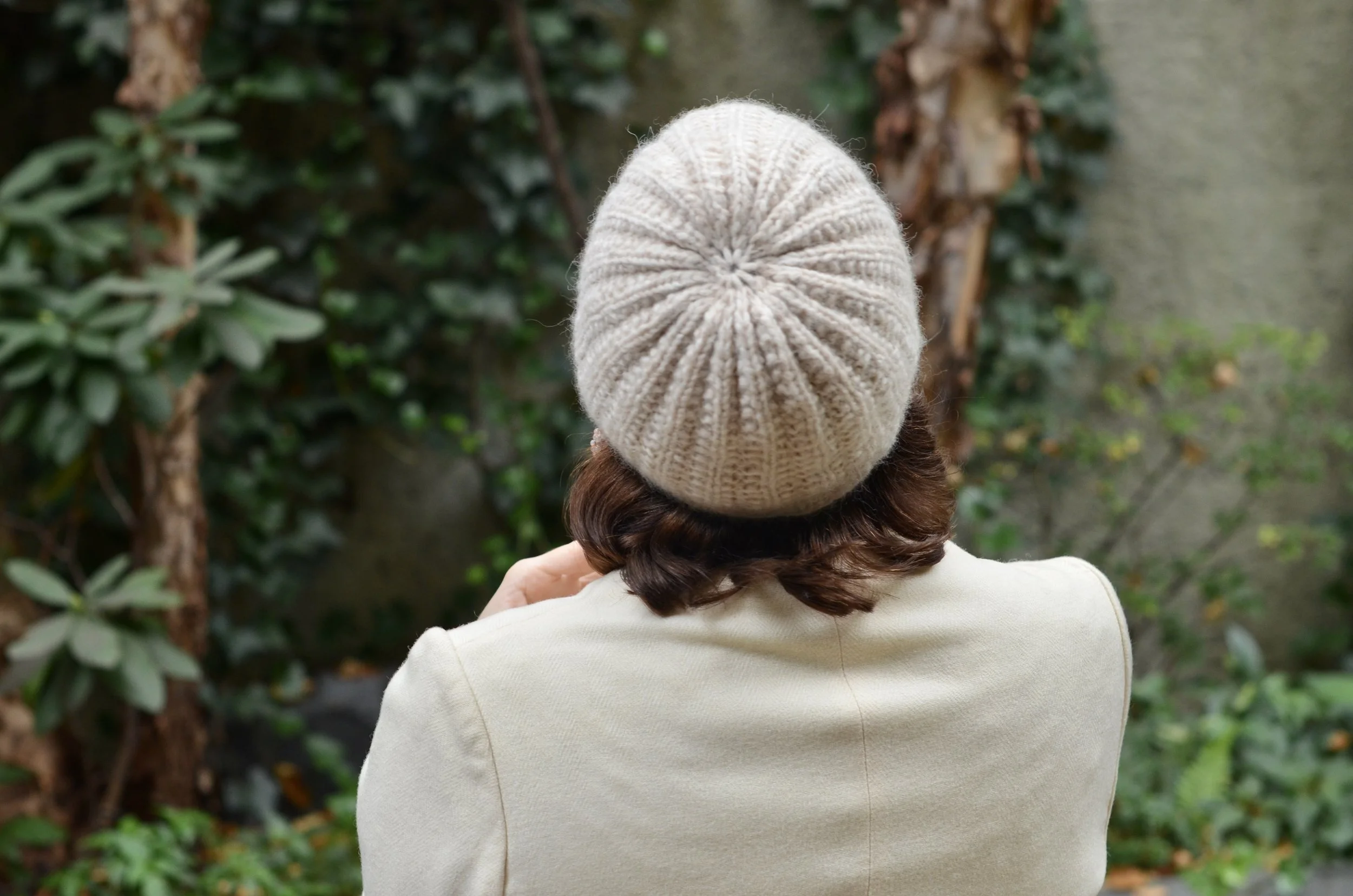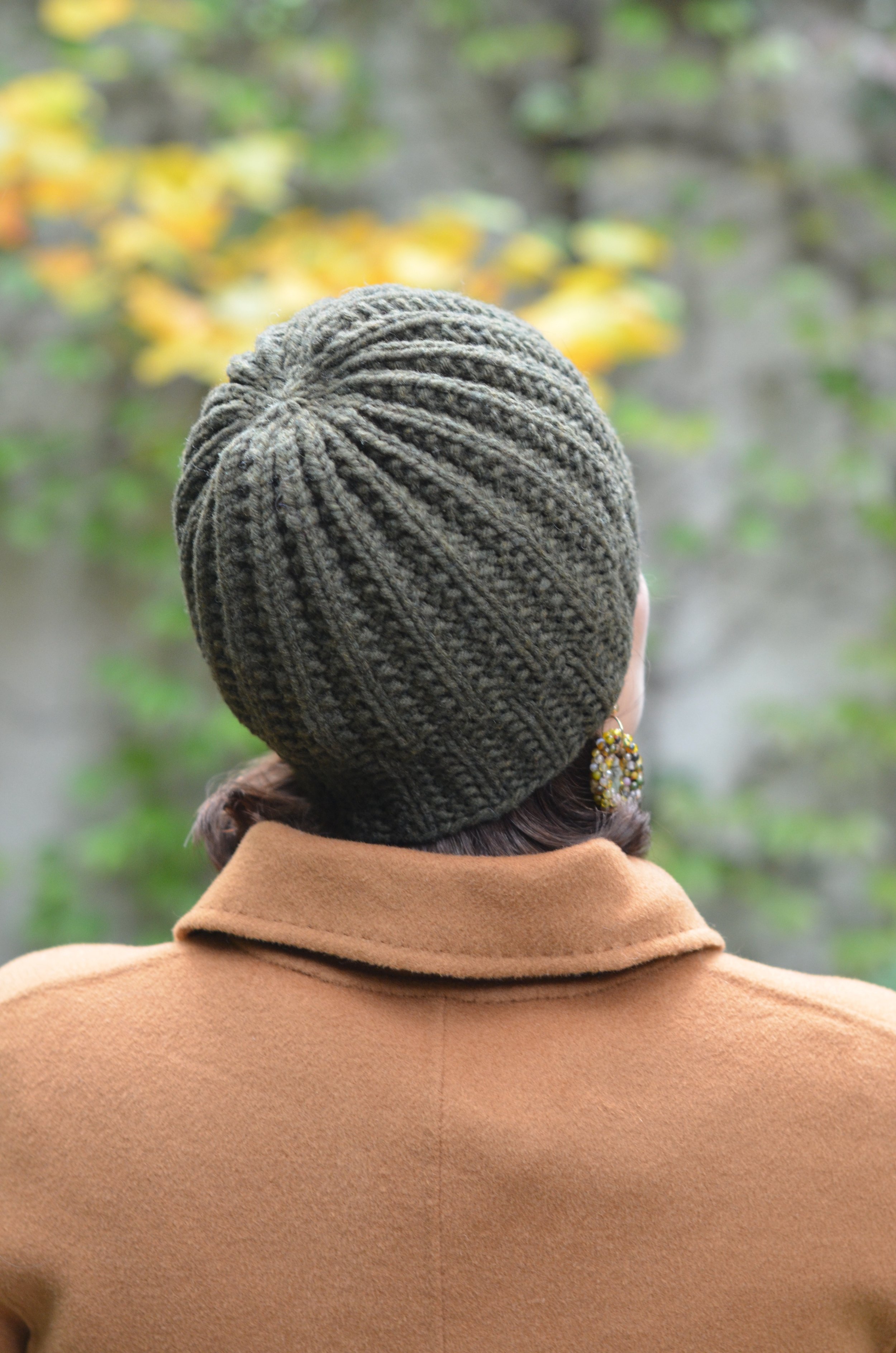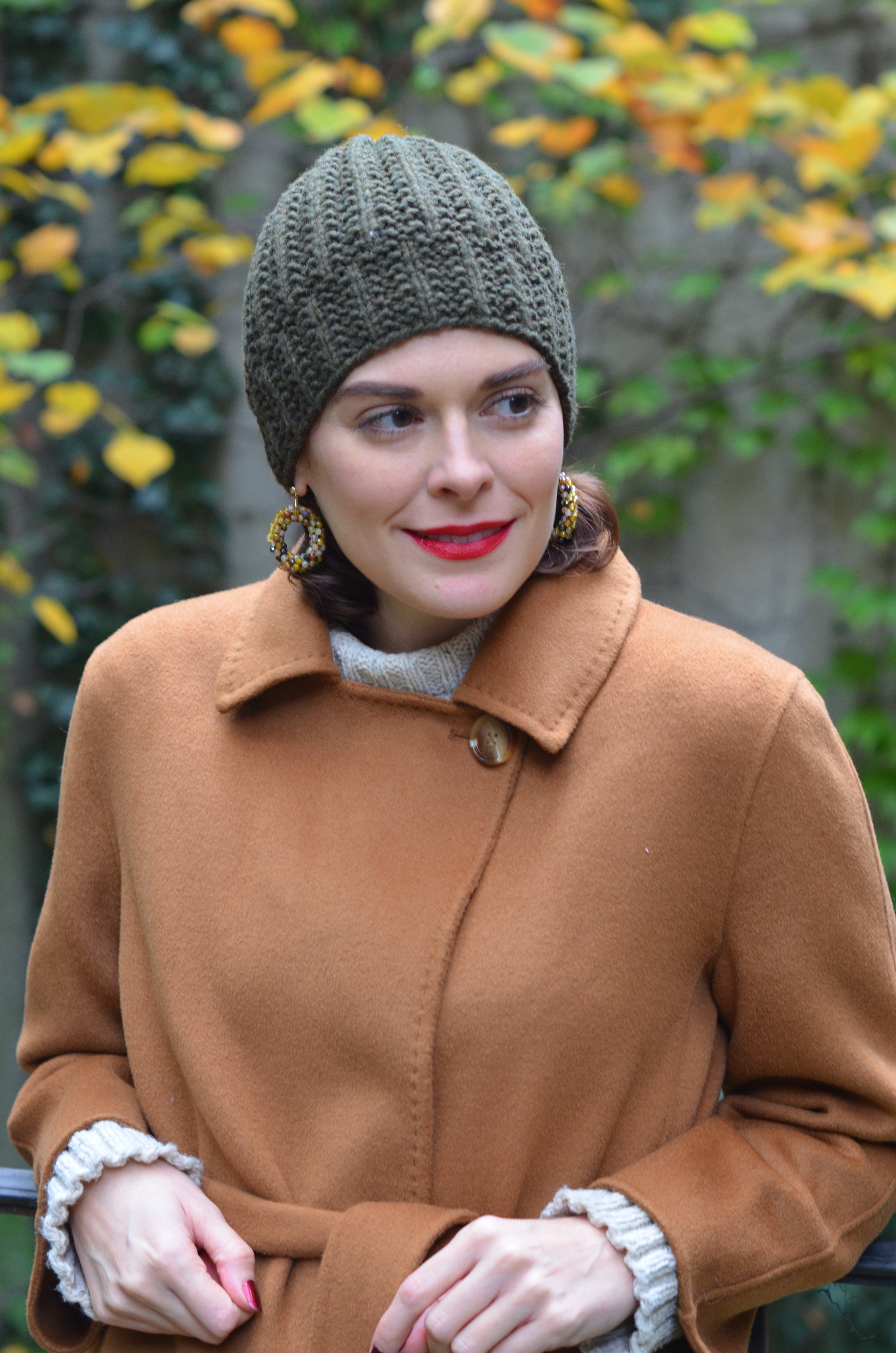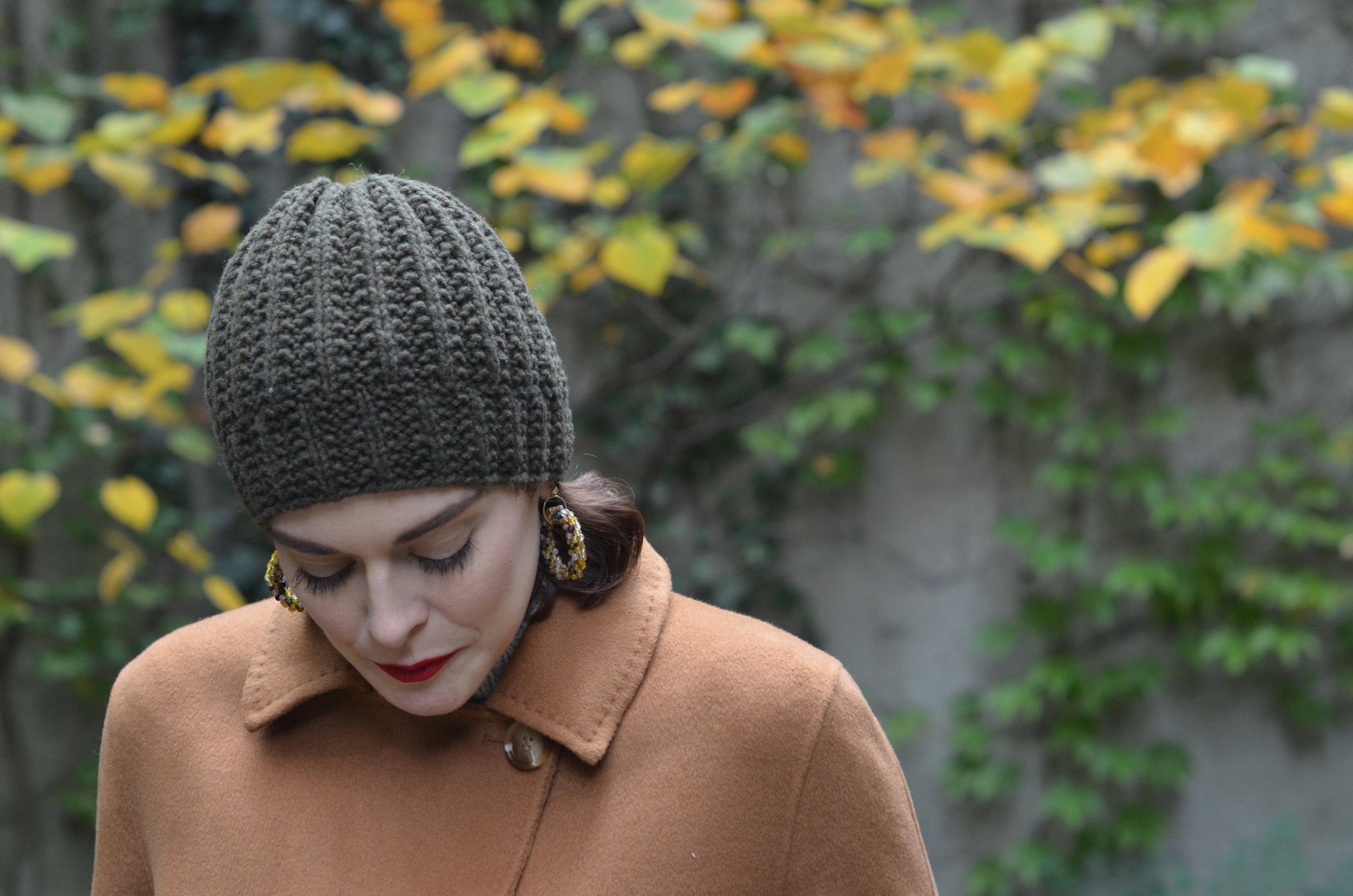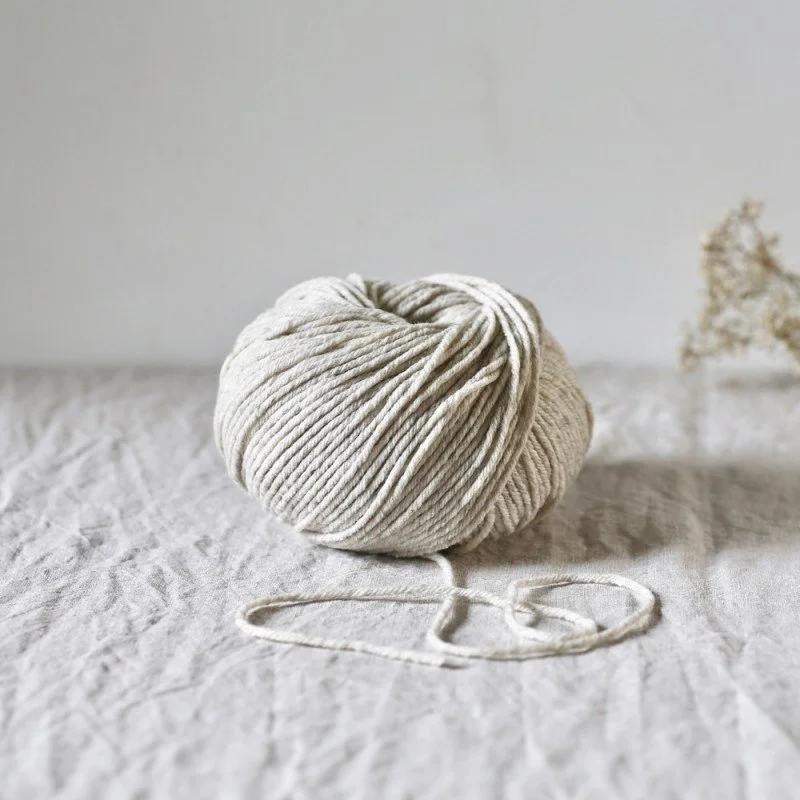DECEMBER KNITS
A COLLABORATION WITH ONE OF MY FAVORITE YARN SHOPS, HEAVENLY FIBERS IN BELFAST, MAINE.
TWO NEW DESIGNS IN CAMAROSE SNEFNUG
Collaboration is at the core of these designs. I always feel that new designs have to earn their place in the world; after all, there are so many patterns out there. That’s why I enjoy collaborating with yarn makers and shops so much; I like to think that the patterns are helping other small businesses thrive, and that our combined efforts get good yarns into the hands of knitters. And once the yarn is in those hands, my hope is that we provide knitters with an enjoyable experience that also broadens their horizons. For me, part of what is so cozy about these pieces is the fact that they were made with friends.
HARLEY is the bulky big sister to my Hawley design from a couple of years ago. A dear knitting friend who loves her Hawley sweater asked if I would design a bigger-gauge version in CaMaRose Snefnug. Our other dear friend, Helen, owner of Heavenly Fibers in Belfast, ME, ordered the yarn for the shop and my star sample knitter, Sue, and I got to work on the samples. Changing the yarn actually required changing the pattern more than anticipated, but the result is a pattern perfectly tailored to Snefnug’s special combination of super softness and gorgeous drape. It also means that this sweater can be worn with a wide variety of ease amounts, depending on the look and fit you want to achieve.
The brown sample is shown in size 2 (with a finished bust of 39½"/100.5 cm) worn with 3 ½"/8.75 cm of positive ease on the model for a more tailored fit. Because the sweater is knit from the top down the length of the sleeves and body are customizable; so for the proportions of this more shrunken fit, we shortened the sleeves to a three-quarter length and kept the body length at the high hip.
The gray sample is knit to match the pattern schematic exactly. This sample was made in size 3 (with a finished bust of 44¼"/112.5 cm) being worn with 8¼"/20.75 cm positive ease for a more oversized, sweatshirty fit with full length sleeves and body. If you enjoy truly oversized sweaters you can even go bigger than that. The pattern includes 8 sizes ranging from 34¾ to 67¾" / 88.5 –172) cm so it will hopefully provide a good many people with a good many options.
As always a full schematic is included so you can make fit decisions before you start and adjust as needed as you work. Before starting I would recommend first checking the full length measurement given in the schematic against your own body to see where the sweater as written will hit on your body. This will alert you to whether you may want to adjust the length as you go. In addition, I gave detailed notes at the beginning of the pattern on the exact order in which to work the pattern sections to give you the best set-up for customizing the lengths. Top-down sweaters do allow you to try on your project as you knit, but it’s important to understand the critical role that the collar and the weight of the sleeves play in where the sweater will ultimately sit on the body. Trying on the sweater without the collar and at least one sleeve can only tell you so much, and as someone who personally finds this method of fitting less predictable than flat knitting, I wanted to share with you the method I find best. If you are an experienced top-down knitter then feel free to proceed as you like—just keep in mind the elasticity of the yarn and if in doubt, block your piece in mid-project to be sure of how things will lay. In fact, I am always a proponent of blocking mid-way through a project so that option is always encouraged.
If this yarn is new to you, CaMaRose Snefnug is what is known as a blown yarn construction; it is composed of hollow cotton tube, through which merino wool and baby alpaca is blown. This construction is a great way to create bulkier weights of heavy fibers like alpaca while keeping the overall effect light. It can also be a way to use less of a luxury fiber while still maintaining heft in the finished yarn (thus keeping the yarn affordable) as well as a way to protect a delicate fiber from abrasion.

